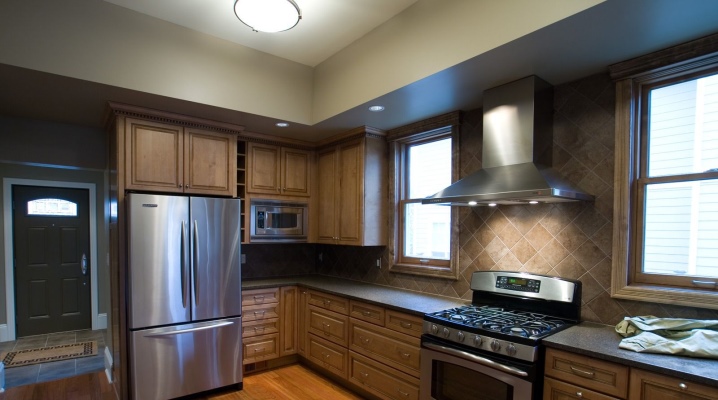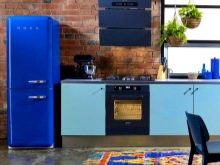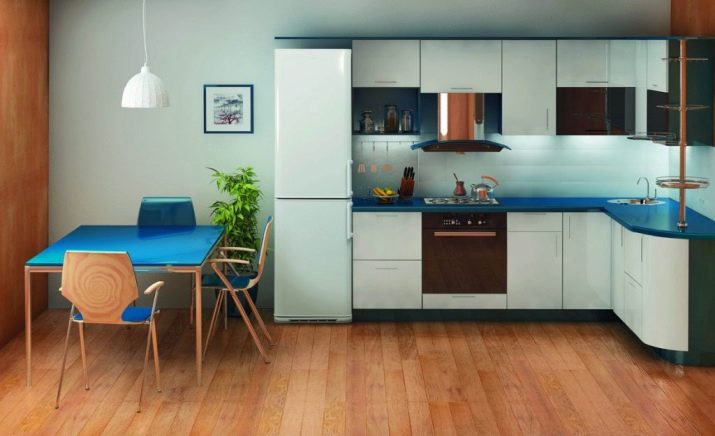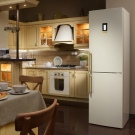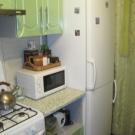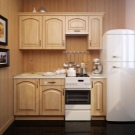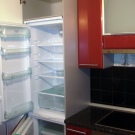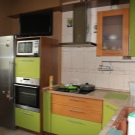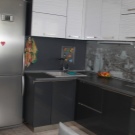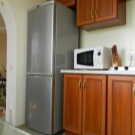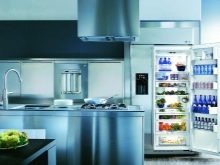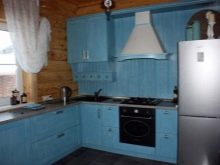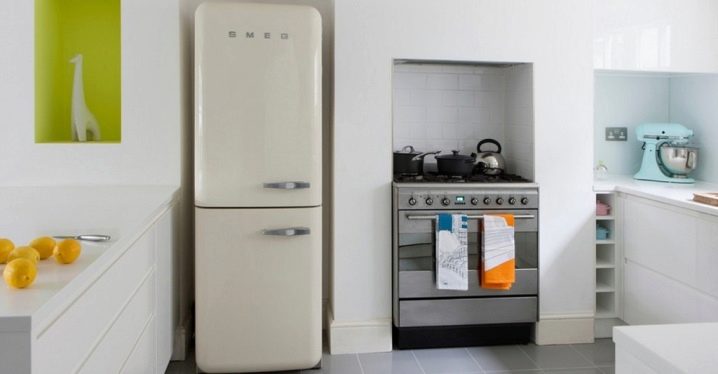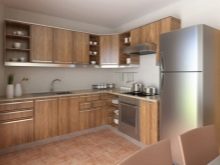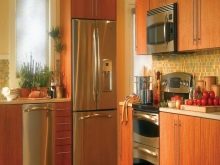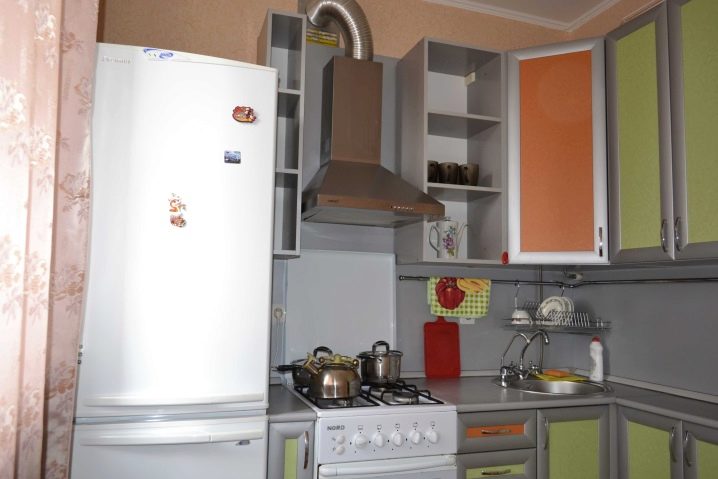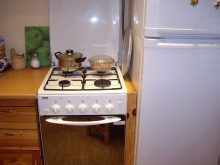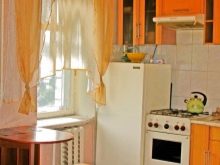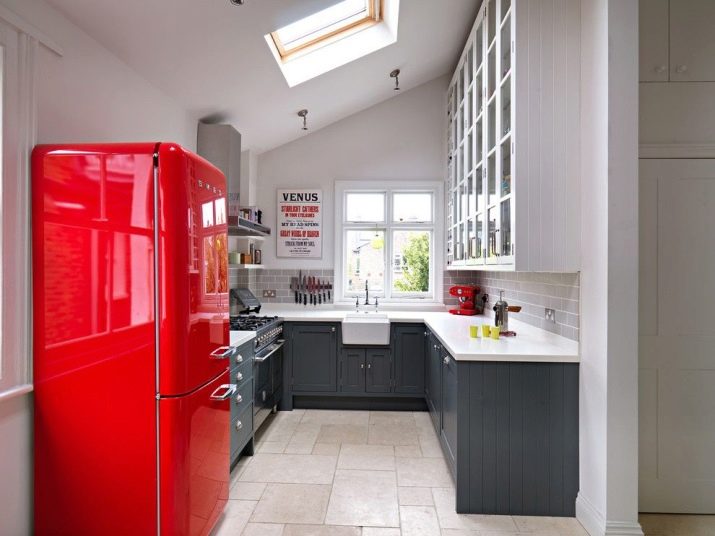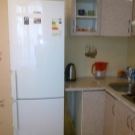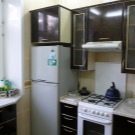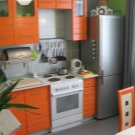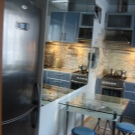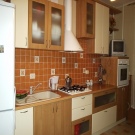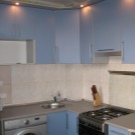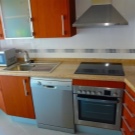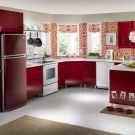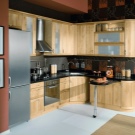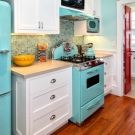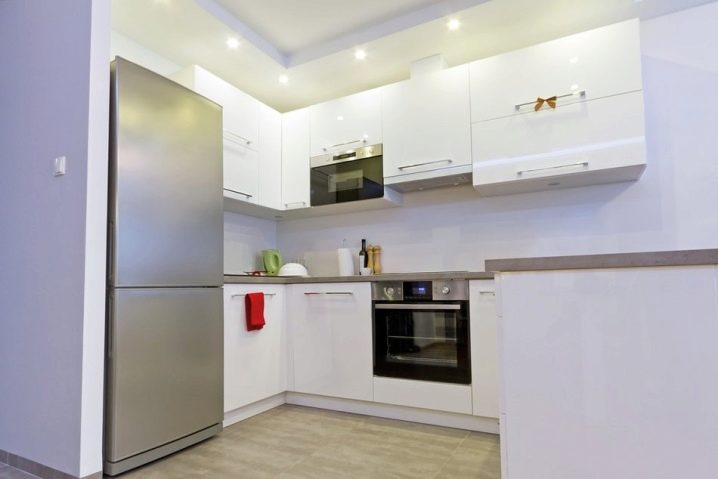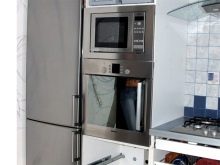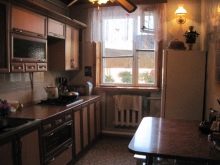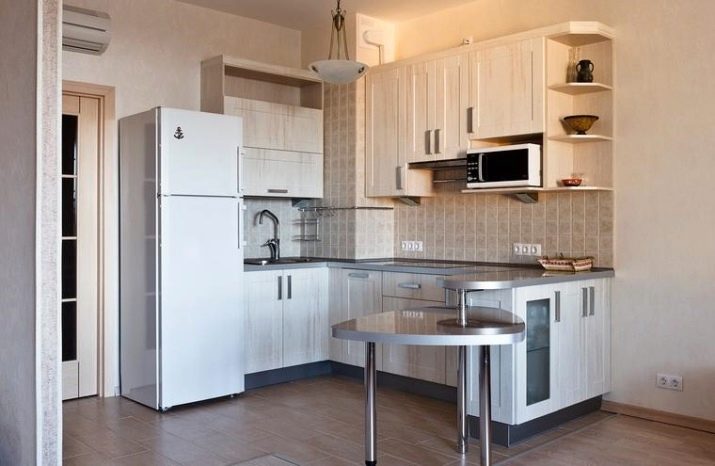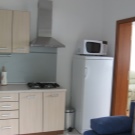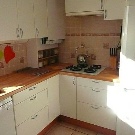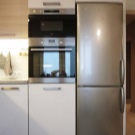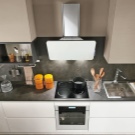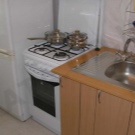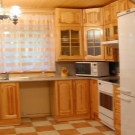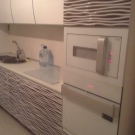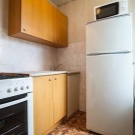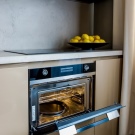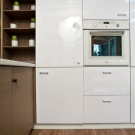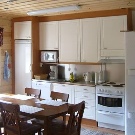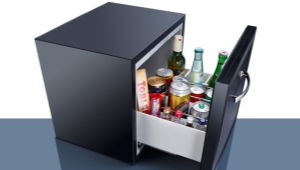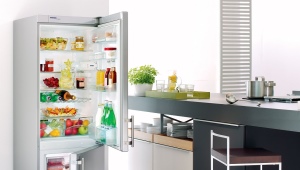Can I put the refrigerator next to the gas stove?
Modern kitchen provides for the presence of not only the original interior, but also filled with a variety of necessary equipment, among which a refrigerator occupies a special place. This household appliance has certain rules of operation. He is picky about the temperature regime, so his “neighborhood” with appliances such as electric cookers, gas stoves, and ovens can harm. In order to avoid undesirable consequences, it is necessary to carefully study the operating instructions and take into account the class of the refrigerator, which directly affects the operation of the device in certain temperature conditions. To date, there are classes: "T" (maximum temperature for the refrigerator + 43 C), ST (+ 38 C), N and SN class (+ 32 C).
Therefore, for normal operation of the refrigerator in the kitchen, it is very important to provide him with a suitable microclimate.
Why not?
Placing a household appliance under the direct rays of the sun, as well as close to the plates, has a negative impact on its performance, as the compressor accelerates, starts to work longer, consumes more electricity and increases wear. Often, small amounts of kitchen do not leave the choice to the owners, you have to place the refrigerator next to other kitchen appliances. Of course, this arrangement is unacceptable, but thanks to the availability of modern technologies, it is easy to provide the refrigerator with reliable thermal insulation, which will protect the unit from overheating and normalize the heat exchange process.
What should be the distance?
The kitchen is considered a special place in the house, not only the appearance but also convenience depends on its layout. Therefore, the correct placement of household appliances in the interior plays a huge role, in particular, this also applies to the location of the refrigerator. In some cases, the lack of space makes many owners put a refrigerator near the stove. In order to protect it from the negative effects of high temperature, you need to know the minimum distance of the location, and of course, it is recommended to additionally make a protective barrier in the form of a built-in cabinet.
The refrigerator is externally insulated, so its location next to the gas stove does not affect the temperature mode inside, but when the surface of the device starts to get very hot, the unit will work in the enhanced mode. As a result, not only electricity consumption will increase, but also the load on the compressor itself, which in turn will significantly reduce the life of the device. To maintain a constant microclimate and uniform cooling of the refrigerator, it is necessary to ensure the maximum distance between the refrigerator and the gas stove. Otherwise, there will be compensation for the heating of that part of the device that stands near the stove. The second part of the refrigerator, which does not require cooling, will begin to freeze the ice. Such temperature drops are not in favor of stored products.
It is not recommended to install this device near the gas stove and from a practical point of view.
In the process of cooking on its surface will scatter fat. Therefore, in this "neighborhood" will have to wash the refrigerator several times a day. To avoid this, you need to put a separator between the device and the gas stove: a table can be an excellent option.In addition, due to the presence of the kitchen table, it will be much easier to remove and remove food.
The minimum distance between the equipment is 20 centimeters. At the same time, this figure may change according to the recommendations of manufacturers, who have certain standards for each model. Thus, the manufacturer Bosch advises to install the plate at a distance of 30 centimeters, and Zanussi prescribes as much as 50 centimeters.
A similar layout problem applies to built-in ovens or simply ovens. In the instructions of any refrigerator it is written that it is strictly forbidden to install it near the heating equipment, and the oven and oven are sources of heating. Therefore, the distance between them should be at least 50 centimeters. Of course, manufacturers additionally equip the refrigerator with insulation, but it is designed to operate the device at normal temperature.
In addition, in order for the products to cool to the required temperature, the device will have to work more intensively and use much more electrical energy. This situation will speed up the breakdown of the refrigerator,and its incorrect placement can be the reason for the refusal of warranty service at a service company, since the user did not comply with the main conditions of operation. Despite this, today in many small kitchens still have to meet the oven and refrigerator nearby. To protect devices as much as possible, many lay a layer of insulation between them, but it does not give a significant result. It is best in this case to apply built-in appliances. In this way, the oven is insulated with wooden walls, and the heat is removed using the hood.
It is not necessary to have a fridge close by and with an electric stove.
Such installation causes heating of the device and negatively affects the operation of the compressor, which, in order to fill the necessary cold, has to work in an enhanced mode. And this is not only high energy consumption, but also rapid wear of the equipment itself. Under the influence of high temperature, the external enamel of the refrigerator can also crack, and the beautiful white surface will quickly become covered with traces of fat; as a result, there is no need to talk about aesthetic appearance.
If we consider the safety precautions, the installation of the refrigerator next to the electric stove is also not allowed. Excessive overheating will adversely affect the operation of the device, and a nonstandard microclimate will cause a fire. Any heat source has a bad effect on the device. In the case when the kitchen area does not allow a special arrangement of equipment, then at least one and a half meters between the refrigerator and the electric stove should be kept. It is also recommended to additionally install a protective shield or partition of thermal insulation between appliances.
How to make insulation?
Despite the many prohibitions and contraindications, yet the refrigerator can be beautifully entered into the overall interior of the kitchen, without harming his work. Today, there are many modern technologies that will minimize the harm of the “neighborhood” in the kitchen of this appliance with other heating equipment. To safely isolate devices from each other, it is sufficient to securely separate them. To do this, you can lay the insulation. This is a good protection that allows you to isolate the refrigerator from other equipment, as well as to close its walls from all sorts of pollution.
Recently, many different materials are used as insulation, all of them are conventionally divided into two classes, have their own characteristics and advantages.
Despite the huge choice of technologies, there is no universal material for thermal insulation. Fastening protective sheets requires not only time, but also money, and the replacement of thermal insulation is time consuming. This is the main disadvantages of its installation. Materials for thermal protection are divided into inorganic and organic:
- Organic materials include cork sheet, textolite, rush, chipboard and foam. The main advantage of such insulation is non-toxicity, which is very important for high temperatures. In addition, this material is resistant to moisture. The disadvantage of the operation of organic insulation is the deformation in the heating process, the high cost.
- Inorganic materials - It is a mineral fiber, drywall and fiberglass. Such raw materials are available in price, it withstands temperature changes well, but is not resistant to moisture. When installing inorganic insulation, it is recommended to use double-sided tape as a fastener. It securely fastens the sheets and is easily removed.
Thermal insulation is sold in the form of edged sheets 75 centimeters wide and about 5 millimeters thick, and also in the form of rolls. The outer side of the material is covered with a special lavsan film, and the inner side is self-adhesive. Before starting pasting, it is recommended to lay the sheets on the floor so that they straighten. Then you can get to work. The sticker is made on the wall of the refrigerator along the entire height from top to bottom. Behind the instrument must be left a distance of about 2 centimeters, it is necessary for the air circulation of the condenser. The sizing process itself takes several minutes.
